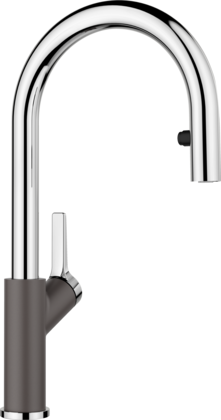VINTERA XL 9-UF
- Striking sink with farmhouse flair, ideal for modern kitchen designs
- Extra-large bowl provides plenty of room
- Perfect fit: right-angled apron front fits the width of a 90 cm cabinet
- One model for flush-mount or undermount installation













